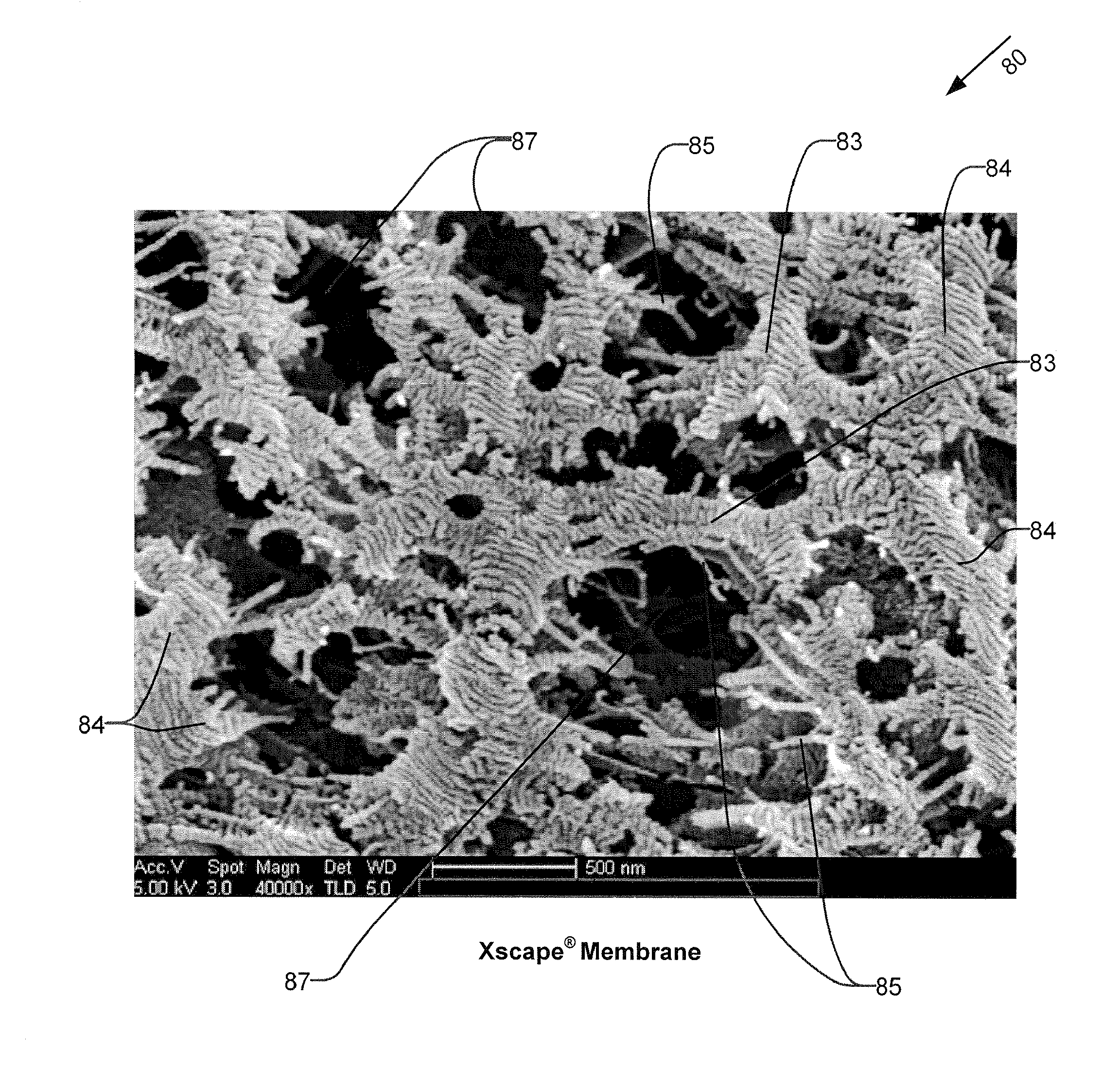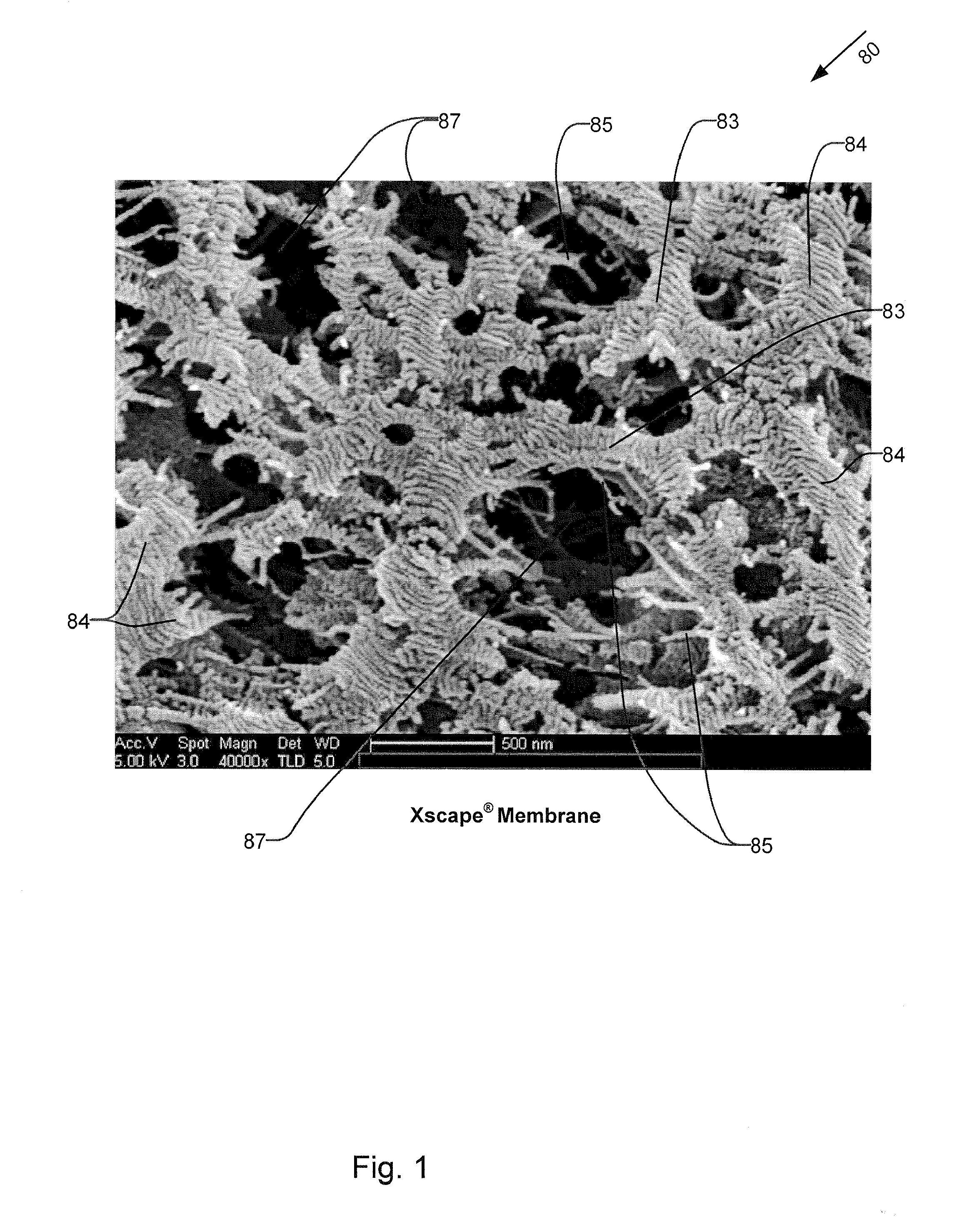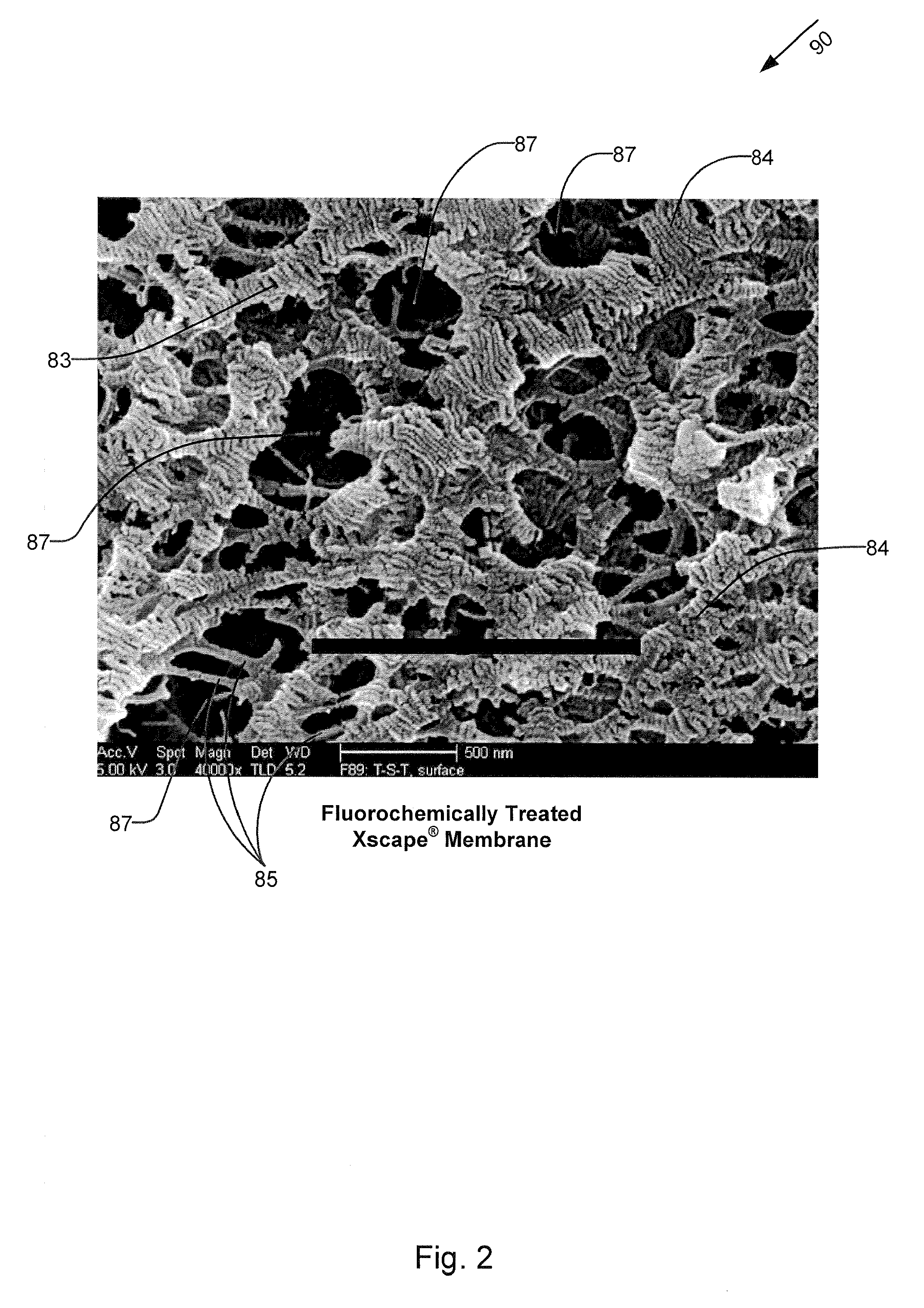Durable water- and oil- resistant, breathable microporous membrane
- Summary
- Abstract
- Description
- Claims
- Application Information
AI Technical Summary
Benefits of technology
Problems solved by technology
Method used
Image
Examples
example 1
[0033]An Xscape® microporous membrane was treated with a coating made with the Repearl® F611-based formula, and using the process, described above. Typical coat weights were about 1.5±0.7 g / m2. A 200 m coated roll was nominally heat-treated at 100° C. for three hours and then measured to determine oil resistance and air permeability. The membrane, as-coated, exhibited poor oil resistance (values of 0-1 based on the AATCC test method); however, the values increased to greater than 5 after heat activation. (Generally, oil resistance values are considered insubstantial in the 0-1 range, and substantial when they exceed 5.) Representative Gurley values of 1000-2500 s were obtained for as-coated samples, while substantially lower values of 70-150 s were obtained after heat activation.
[0034]The coated membrane did not exhibit oil resistance when the sample temperature was maintained above 70° C. and the sample attained orientational ordering and consequent oleophobicity when cooled back t...
example 2
[0035]In this example, the coating solution was a combination of 1910 g of Repearl® F611 with 1070 cc of reagent-grade acetone only (i.e., the same trial as in Example 1, without the odorless mineral spirits). The resulting oil repellency was still greater than 5, and the membrane had MVTR>94000 gm / m2 / 24 hr.
[0036]In another embodiment, the reagent grade acetone was replaced with reagent grade hexane. The oil repellency still exceeded 5.
example 3
[0037]In this example, the process parameters (membrane material, coating method, and activation procedure) described above were repeated using fluoropolymer solutions with concentrations of 2.5, 5.0, 6.9, and 7.5% w / v. The following table summarizes the coat weight and oil resistance data corresponding to the different concentrations tested.
TABLE 1Summary of physical properties of F611 coatedmembranes as a function of solution concentrationFluoropolymerconc. (% w / v)2.55.06.97.5Coat weight (g / m2)1.111.481.491.28Oil resistance5666
PUM
| Property | Measurement | Unit |
|---|---|---|
| Structure | aaaaa | aaaaa |
| Electrical resistance | aaaaa | aaaaa |
| Molecular weight | aaaaa | aaaaa |
Abstract
Description
Claims
Application Information
 Login to View More
Login to View More - R&D
- Intellectual Property
- Life Sciences
- Materials
- Tech Scout
- Unparalleled Data Quality
- Higher Quality Content
- 60% Fewer Hallucinations
Browse by: Latest US Patents, China's latest patents, Technical Efficacy Thesaurus, Application Domain, Technology Topic, Popular Technical Reports.
© 2025 PatSnap. All rights reserved.Legal|Privacy policy|Modern Slavery Act Transparency Statement|Sitemap|About US| Contact US: help@patsnap.com



